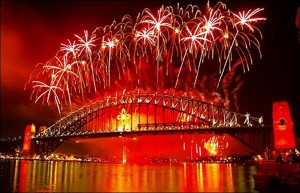An observance dating back to the late 19th century is celebrated on the first Monday in September in both the United States and Canada. Labor Day in the USA, Labour Day in Canada.
In the States, the day honors the American labor movement and the contributions that workers have made to the strength, prosperity, laws and well-being of the country. It is considered the unofficial end of summer in the United States and it is recognized as a federal holiday.
Canada’s Labour Day is a celebration of Canadian workers’ social and economic achievements. Until 1892, unions were illegal in Canada’s archaic British law system, making it incredibly difficult for workers to strike and demand better working conditions. The foundation for Labour Day were laid in March of 1872 when the Toronto Typographical Union demanded a 9-hour work day. When its demands weren’t met, the employees went on strike and were subsequently arrested according to the law.
As trade union and labor movements grew in the States in the late 19th century, trade unionists proposed that a day be set aside to celebrate labor. “Labor Day” was promoted by the Central Labor Union and the Knights of Labor, which organized the first parade in New York City. In 1887, Oregon was the first state of the United States to make it an official public holiday. By the time it became an official federal holiday in 1894, 30 states in the United States officially celebrated Labor Day.
More than 80 countries celebrate International Workers’ Day on May 1 – the ancient European holiday of May Day – and several countries have chosen their own dates for Labour Day.
May Day emerged in the States in 1886 as an alternative holiday for the celebration of labor, later becoming known as International Workers’ Day. The date had its origins at the 1885 convention of the American Federation of Labor, which passed a resolution calling for adoption of the eight-hour day effective May 1, 1886.
While negotiation was envisioned for achievement of the shortened work day, use of the strike to enforce this demand was recognized, with May 1 advocated as a date for coordinated strike action. The proximity of the date to the bloody Haymarket Riot of May 4, 1886, further accentuated May First’s radical reputation.
There was disagreement among labor unions at this time about when a holiday celebrating workers should be, with some advocating for continued emphasis of the September march-and-picnic date while others sought the designation of the more politically-charged date of May 1.
Conservative Democratic President Grover Cleveland was one of those concerned that a labor holiday on May 1 would tend to become a commemoration of the Haymarket affair and would strengthen socialist and anarchist movements that backed the May 1 commemoration around the globe. In 1887, he publicly supported the September Labor Day holiday as a less inflammatory alternative. The date was formally adopted as a United States federal holiday in 1894.
In big cities, people try to go outside and enjoy beaches and barbecues over the Labor Day Weekend. There are also numerous events and activities organized in the cities. For example, New York offers Labor Day Carnival, fireworks over Coney Island, happy hours in restaurants, 12-hour dance parties and many other activities. In Washington, one popular event is the Labor Day Concert at the U.S. Capitol featuring the National Symphony Orchestra with free attendance.
On April 18, 1872, Canadian Prime Minister Sir John A. Macdonald introduced the Trade Union Act, which legalized and protected unions in Canada. Since then, Labour Day has served as a yearly celebration of the achievements made to improving working conditions and employment benefits for all Canadians.
In both countries, Labor Day weekend marks the start of the fall football season, both at the professional and college levels. There are parades and picnics across both lands. In Canada, there are many fireworks displays, including those put on by many individuals who buy their own fireworks.
Enjoy the end of summer and have a great Labor, or Labour, Day!
